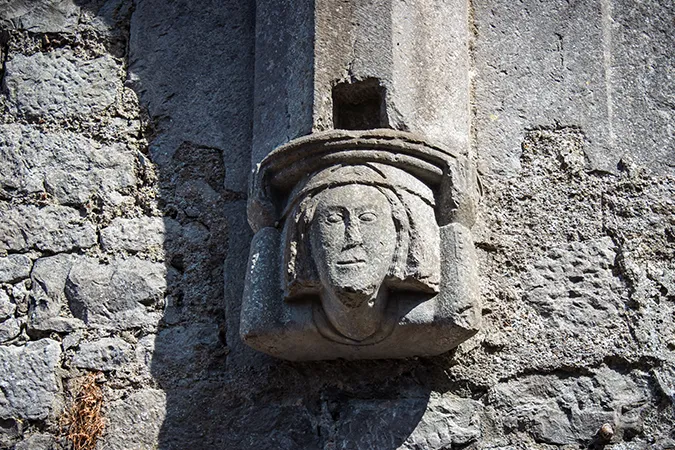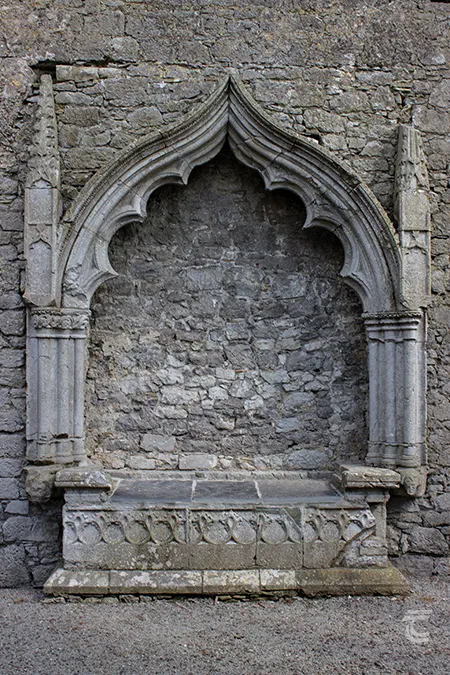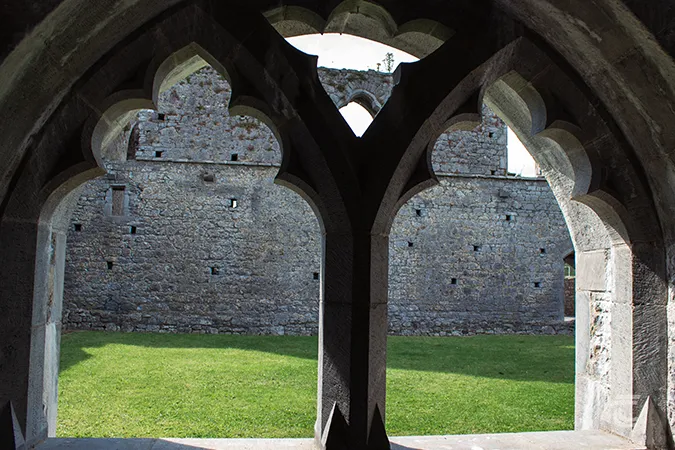Kilmallock Dominican Priory
Settlement in Kilmallock began in around AD 600, when St Mocheallóg founded a monastery on a hill one mile north-west of the current town. This monastery gave the town its name, as it derives from the Irish Cill Mocheallóg (the Church of Mocheallóg). Kilmallock is one of Ireland’s best-preserved walled towns, and it contains a wealth of stunning medieval buildings and features.
Perhaps most impressive of this array of medieval architecture is the magnificent Kilmallock Dominican Priory that sits on the banks of the River Loobagh. The priory was founded in 1291, though it was extended and altered through the centuries. It contains some of Ireland’s best examples of medieval architecture such as the ornate five-light east window. A large number of sculptures of human heads (possibly representing benefactors of the priory) are to be found throughout the building, as are a wealth of other details wait to be discovered.
For practical information about visiting this site Click Here
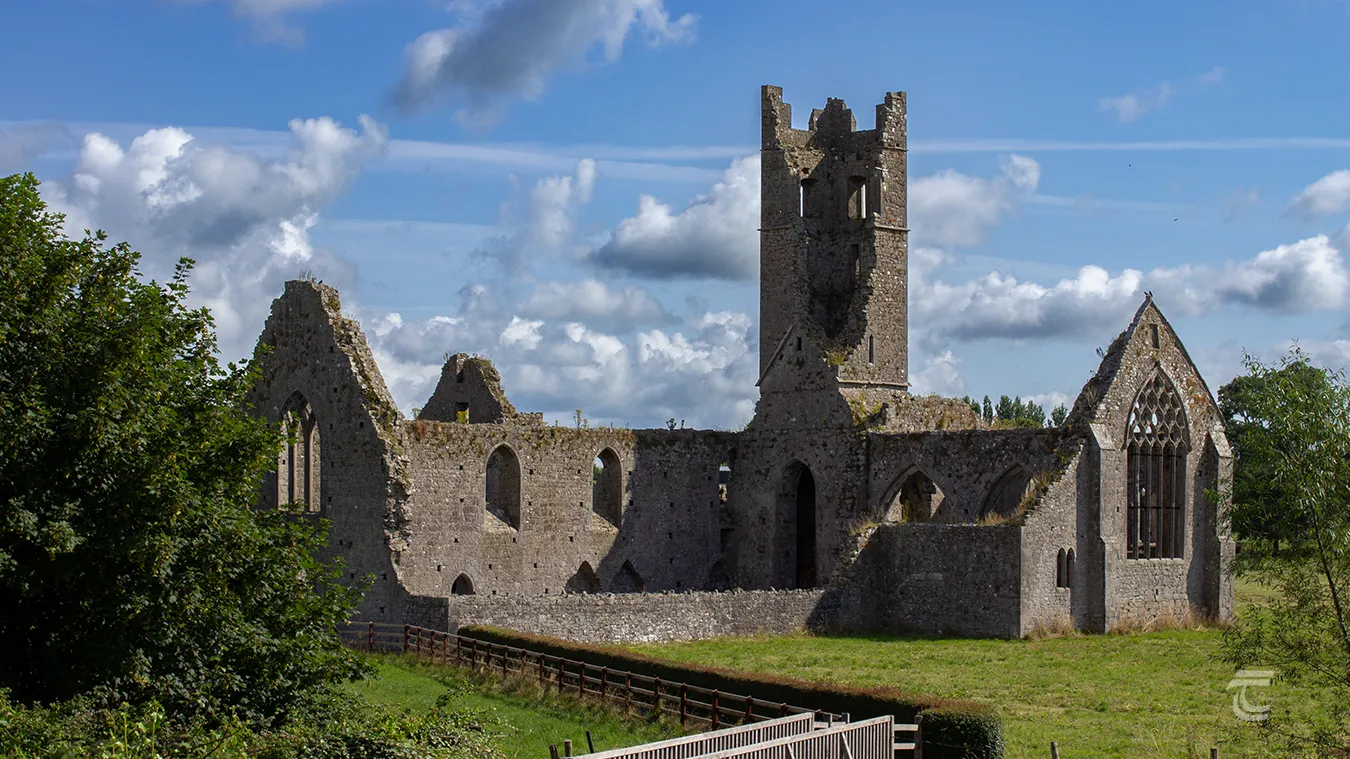
Kilmallock Domincan Priory • Limerick
Changing Times
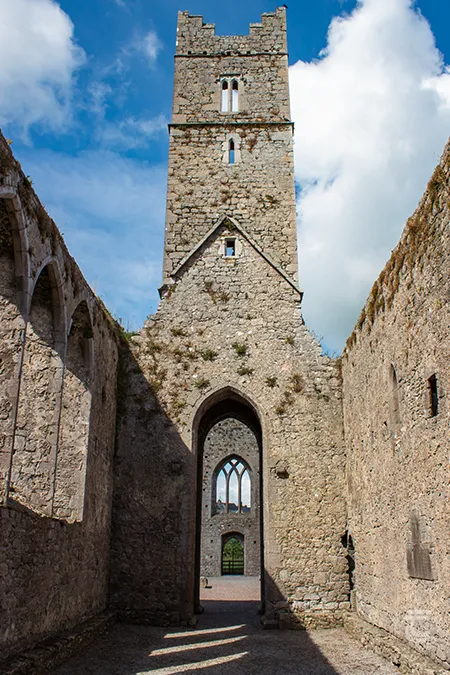
Interior of the Dominican Priory • Limerick
Kilmallock was founded with the support of the powerful Gilbert Fitzgerald. His tomb lies in the sanctuary beside the high altar of the priory, a place of honour reserved for the founders of monasteries. The Fitzgerald family are entwined with the story of Kilmallock. This Anglo-Norman family dominated southern Munster for nearly three centuries. From their base in Kilmallock, the Fitzgerald Earls of Desmond (Desmond derives from Deas Mumhan meaning South Munster), controlled Limerick, North Kerry, North and East Cork and West
Waterford.
The Earls of Desmond gradually became independent of English authority and became almost de-facto sovereigns of southern Munster. Like many other Norman families, they intermarried with the native Irish and adopted Irish language and customs. This changed with the rise of the Tudor dynasty in England. The most immediate impact of the Tudor dynasty and the Reformation was that the priory was suppressed by Henry VIII in 1541. Henry was the first English King to declare the title of ‘King of Ireland. Prior to Henry, the English rulers had been ‘Lords of Ireland’ and he ushered in a new period of colonial control and power.

Interior of the Dominican Priory • Limerick
Monastic Murder
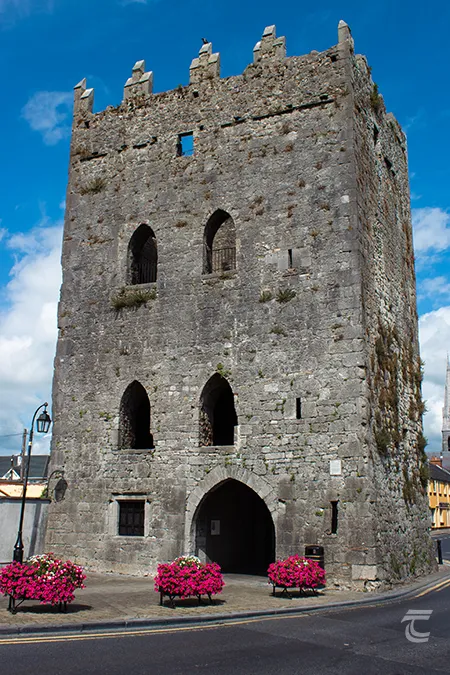
King’s Castle, Kilmallock • Limerick
Although the Dominicans retained a presence here for a further two centuries, the position of the monastery remained insecure in the turbulent times that followed. The priory was still home to a community of monks in 1645 during the Confederate Wars, when it was visited by the Papal Legate, Cardinal Runnicini. Tragically, in 1648 it was attacked by the parliamentary forces of Lord Inchiquin and two monks were put to death in front of the altar. However despite these shocking events, monks continued to live and work here until well into the eighteenth century, often under the threat of religious persecution.
As well as the incredible priory, Kilmallock has a number of other medieval buildings to discover. King’s Castle is one of the most notable. This fine example of an urban tower house dates to the fifteenth century. It is likely that it was originally built as the fortified home of a wealthy merchant or noble. Some of the other medieval buildings include the remains of a sixteenth century stone mansion house, the medieval collegiate church of Saints Peter and Paul and of course the well-preserved stone walls that surround the town.
Upper left: medieval sculpture in the priory • Lower left: the cloister • Right: an ornate late-medieval canopy tomb in the priory
Top: medieval sculpture in the priory • Middle: an ornate late-medieval canopy tomb in the priory • Bottom: the cloister
